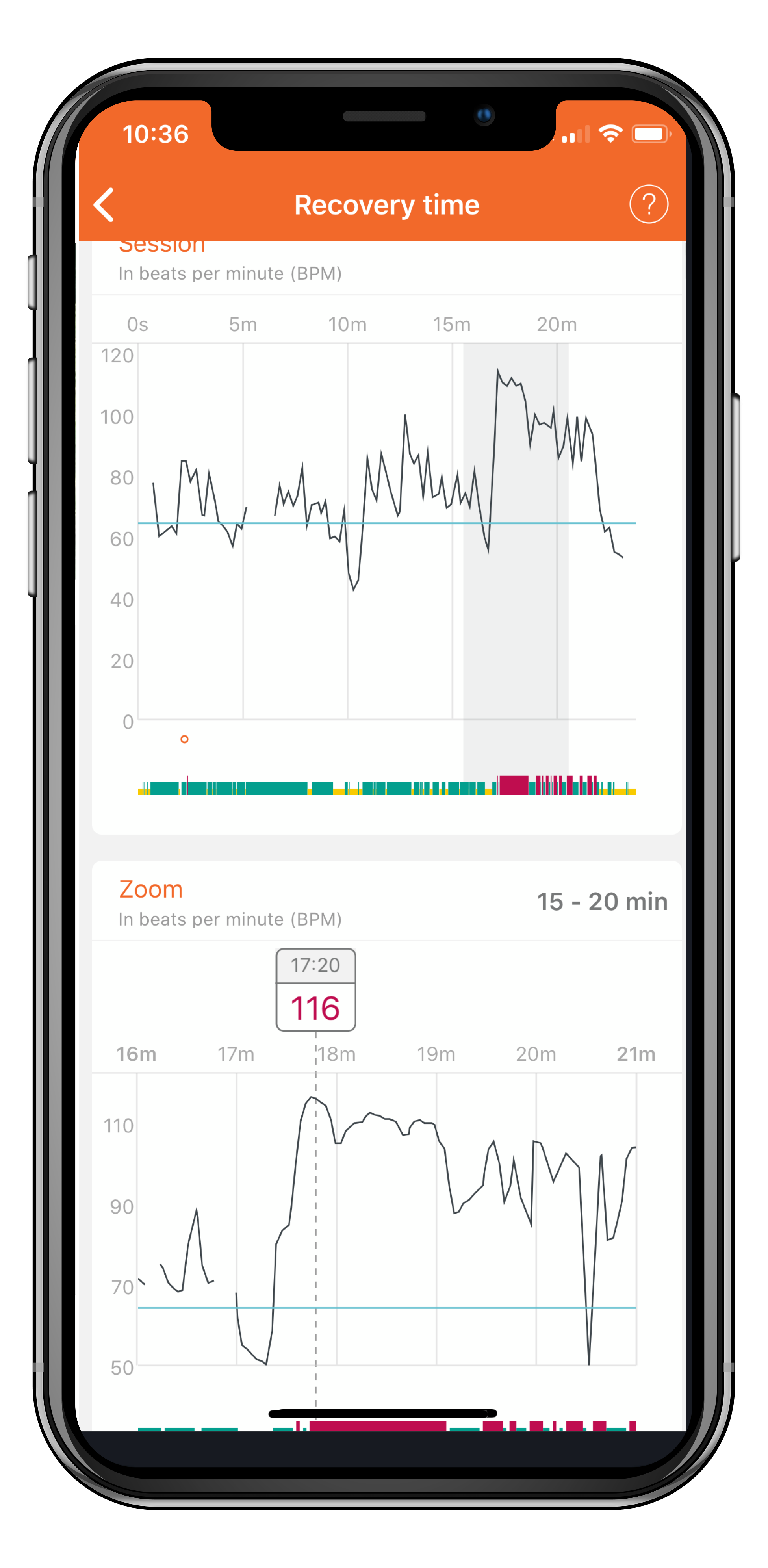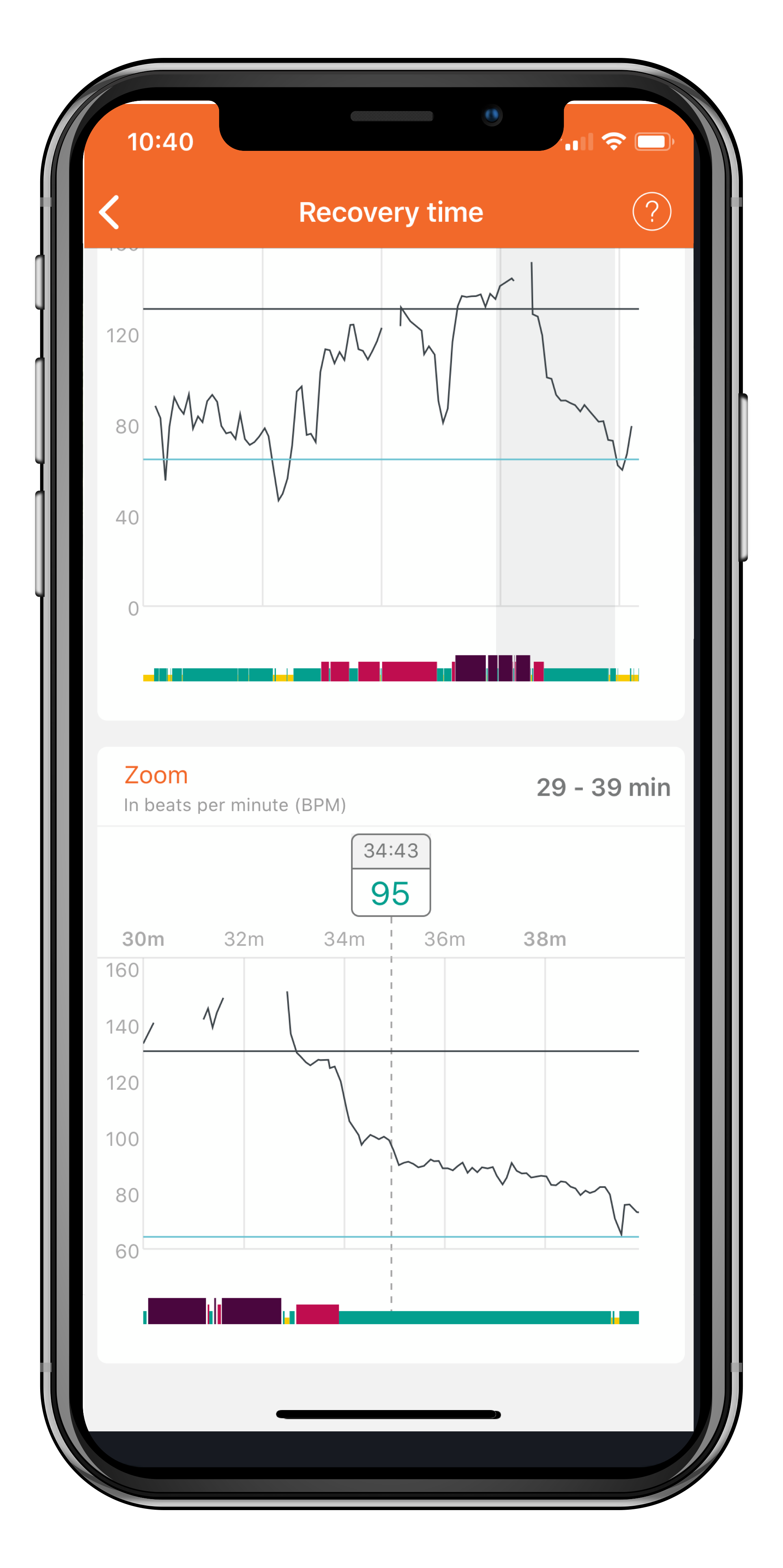How is the recovery time calculated?
How is the recovery time calculated?

One of the specific features of Motion S is the calculation of the recovery time. Here is how it is calculated:
Having a recovery phase during a session requires 2 conditions:
- Have worked more than 30s above the high threshold that we’ve set at 130bpm
- Have stabilized the heart rate for at least 30s below the recovery threshold set at 64bpm.
The recovery time is the time it takes for the horse to go from 130bpm to below the 64bpm!
Why these conditions?
Well, because we assume that to have a recovery there must have been a minimum effort. If the heart rate does not rise above 130 bpm, then the recovery is not calculated.
Active or passive recovery?
The application also determines whether the recovery is active or passive. For this, we use the predominant gait during this recovery phase. If the gait is predominantly trotting or cantering, then the recovery is considered active. On the other hand, if the gait is predominantly walk or halt, then the recovery is considered to be passive.
How to interpret and use the recovery time?
The recovery time is very interesting because it allows you to evaluate the physical condition of the horse. A horse in good condition recovers quite quickly. On the contrary, a horse in poor physical condition, in pain or stressed will take longer to recover.
Also, with a well conducted groundwork, the recovery time should decrease as time goes by. The evolution arrows are there to help riders identify progress.
The average recovery time of our users is 7 minutes.
Some Examples

Here, the horse has not passed above 130bpm so the recovery time is not calculated.
In the same way, if the horse does not go below 64 bpm, it is considered that he has not fully recovered.

Here the horse has not recovered enough therefore, recovery time is not calculated.
